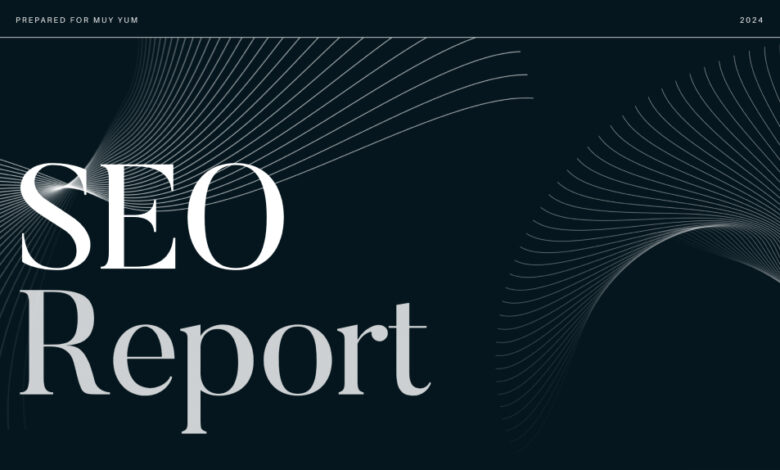SEO Evaluation and Analysis: Why It’s Important & How to Do an SEO Audit

The ever-evolving digital marketing landscape is steadily shifting to the extensive use of digital technologies and the internet medium to attract smartphone-savvy prospects. Online marketing empowers companies to reach diverse target segments in real time. Digital marketing leverages the Search Engine Optimization technique to push content across channels more effectively.
Unlike conventional marketing involving print and television media, online marketing enables companies to get granular insights into the effectiveness of campaigns. Monitoring and tracking of business websites are possible by leveraging SEO evaluation and analysis services from reputed lead marketer agencies.
What is SEO analysis and its importance?
Each website has a specific objective to fulfill. E-commerce websites allow buyers to browse products and make online purchases. Corporate websites help organizations build their online image and reputation. Informative websites educate users about various topics, while professionals create websites to showcase their work and attract prospective clients.
A website must be capable of meeting these objectives and becoming visible to the target audience. There are multiple factors, including content, structure, and user experience, to improve a website’s online performance and discoverability. Search Engine Optimization is a vital requirement to push the website to the front page of the search engine results page.
These are the three most crucial aspects of a website’s SEO analysis and evaluation:
- On-page SEO analysis – Covers the site’s images, text, meta-tags, structure, and HTML source code
- Off-page SEO analysis– Involves off-site SEO activities like guest blogging, link-building, and featuring on reputed websites
- Technical analysis– It looks after mobile optimization, and improving the site structure.
SEO analysis covers every area of the website that contributes to the website’s online discoverability and overall user experience (UX). SEO professionals at beauty salons and spas marketing services determine improvement areas of the website and its performance needing improvements.
Complete SEO analysis also involves the identification of opportunities to gain higher search engine rankings by optimizing search engine bots, and factors that boost on-page and off-page SEO.
It also enables you to monitor the effectiveness of your present SEO tactics.
Performing an SEO audit
SEO evaluation and analysis is a complex activity requiring in-depth technical knowledge and the use of advanced tracking tools. A reputed digital marketing agency near me lists the site’s SEO elements that may require optimization. Several SEO checking tools can help determine improvement areas to help improve online visibility and traffic of meaningful prospects.
Content
The website’s content is the most vital SEO element for evaluation and analysis. The leading search engines consider content as among the top three ranking elements. Content’s originality and relevance are significant aspects for better ranking by crawlers. Optimum use of keywords and avoiding the use of spamming content are vital factors for the evaluation of SEO.
- Upload fresh content like blogs, infographics, FAQs, and videos to improve user engagement and keep the site lively.
- Consider enriching the content’s SEO by using top keywords. It requires in-depth keyword research using appropriate tools.
- Using high-ranking topics to fill the content gaps is crucial to implementing periodic assessments to identify content gaps.
- Identify the duplicate content on the website and remove it to avoid a drop in search engine ranks. Google may remove the website from the index if it finds content duplication.
- Catchy titles for the blogs and meta descriptions improve the traffic of relevant prospects.
- Image descriptions and adding alt texts improve the SEO value of images on the website.
Meta description
Adding meta descriptions to each page on the website facilitates search engine bots to index the site for better search potential. Brief descriptions of the content are helpful for users to know the context before opening the page. Create meta descriptions that differ from the titles to improve the SEO of the site. Avoid creating lengthy meta descriptions by keeping the character length between 135 to 160 and do not forget to add keywords for better Search Engine Optimization.
Site’s URL
The URL structure is crucial because it serves as a signboard, helping users navigate to the site without hassles. URL organizes the website content by acting as the website’s digital address. Checking the URL structure and improving it is helpful to improve the SEO of the website. The following elements of the site’s URL need evaluation by an established marketing agency in Alabama.
- An easily readable URL structure with relevance to the site’s content enhances the site’s SEO
- Boost the site’s discoverability by including keywords in the URL structure.
- Keep the URL under a hundred characters to make it short by using underscores and hyphens.
- Safeguard the site by opting for encryption, such as HTTPS, to convince users they are browsing in a secure environment. SSL works as security against hackers.
Site structure
An intuitive website structure improves user experience as visitors can navigate to different pages and sections of the site smoothly. Optimization of the site’s architecture is crucial for SEO, as Google crawlers can find the pages with no complexities.
The navigator bar of the website should be easily visible on the top portion. It should list all the main pages for instant navigation. Users should be able to find the right section within a few clicks instantly. A complex site structure will affect user experience and force users to abandon the site. Provide a detailed sitemap to help users know the site structure at a glance.
Link building
Links enable users to navigate easily through different pages and content, besides establishing a relationship between two websites. SEO evaluation and assessment cover internal links and inbound links.
- Internal links– these link two blogs or concepts within the website to establish seamless connections. Established SEO experts may recommend adding an exclusive section to list popular posts or related articles to boost internal link-building for improving SEO. They ensure that each page and article contains internal links to achieve a higher search engine ranking. The anchor texts should be short and catchy to encourage users to click on them. Using the same hyperlink more than once is not a good SEO practice.
- Inbound links– Examining SEO includes determining and eliminating any bad inbound links. It requires asking the site admin to remove the linkage. Changing the link to ‘no-follow’ is another way to deal with critical links.
Improving the site’s responsiveness
Checking the site for mobile compatibility is crucial because most internet users access websites through smartphone devices. Making a mobile-friendly website will enhance the user experience and search engine ranking.
Techniques like increasing page loading speeds, optimizing images, and decreasing JavaScript create a responsive website. Fixing the bugs in the site’s code is a significant aspect to boost the health of your website.
In conclusion
Every business depends on a healthy and high-ranking website to get more prospects. Search Engine Optimization is key to the website’s ability to get better online visibility and traffic. It’s vital to evaluate and analyze the SEO elements of the site regularly to increase sales and profits. Lead Marketing Strategies provide integrated services for SEO evaluation and analysis to boost your site’s visibility and brand awareness.



